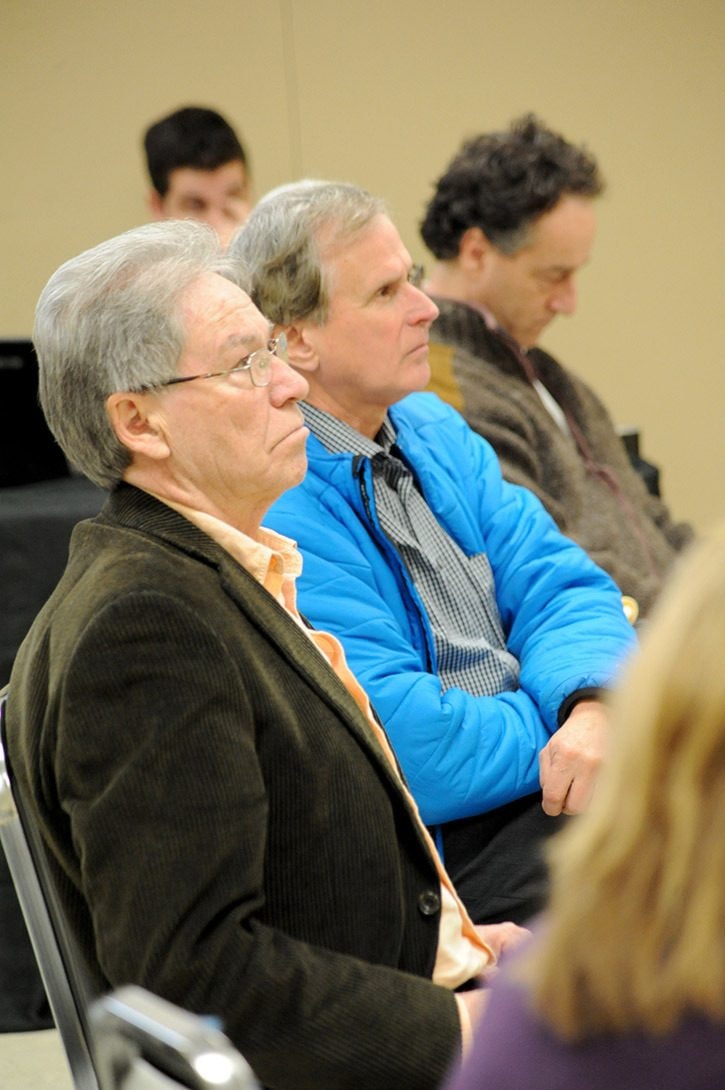Mount Polley Mine's tailings impoundment was a mechanism on the brink of failure, according to the findings of the independent investigation panel.
"The design did not take into account the complexity of the sub-glacial and pre-glacial geological environment associated with the perimeter embankment foundation,” panel chair Dr. Norbert Morgensten said as the panel released its report on the Aug. 4 breach during a press conference in Victoria Friday.
"The weight of the dam was too much for the weak materials in the foundation to bear," panel member Steven Virk said.
The weaker area determined as glaciolacustrine (GLU) was in a small localized area where the breach occurred.
It went undetected because the original drilling and subsurface investigations were not designed to detect those kinds of small features.
The design didn’t appreciate how important they were to the stability of the structure and particularly the change of behaviour that occurred as the dam was heightened and reached a certain elevation, Virk said.
Not taking into account the glacial environment characterization could be likened to a creating a loaded gun, Morgenstern said.
“But if constructing unknowingly on this upper GLU deposit constituted loading the gun, building with the steep 1.3 metre to one metre steep slope pulled the trigger," he added.
The investigation found no evidence of failure due to human intervention, overtopping, or piping and/or cracking resulting in internal erosion.
It also indicated that the water accumulation within the TSF was not a cause of failure, however Virk said because of the 10 million cubic metres of water that was present more tailings were released once the breach occurred.
"What we often see in these kinds of failures is a mud flow and tailings come out in a liquefied state. That didn't happen here. The tailings came out by erosion."
Cariboo-area politicians who gathered at the Pioneer Complex Friday to hear the report reacted afterwards with a mix of relief and uncertainty.
"We can hopefully put some closure to the issue," Cariboo Chilcotin MLA Donna Barnett said. "August 4 was a devastating day, and something none of us wants to see again."
Barnett said the expertise of the panel and the explanation that was given in laymen's terms and the depth of the investigation was very well done.
Cariboo Regional District Chair Al Richmond said it is very fortunate no one was hurt or killed.
"We have the opportunity to hope they implement the changes the mining minister is saying the panel has recommended and move forward with the importance of the mine in the area to see if at all possible it can begin again," Richmond said. "We certainly know now that the use of that tailings storage facility is some time off."
Richmond said the report's recommendations will benefit the Cariboo because additional work will have to be done on tailings storage facilities.
"I am glad they have set some tight timelines on that," he said. ""We have to make them safer and rebuild public confidence in mining."
Agreeing it was good that the CRD film of the breach unfolding proved helpful to the investigators, Richmond was quick to credit the CRD emergency response team who worked with the RCMP and provincial government and made a decision to get in the air to see what was happening that day.
"It was team thing of everyone pulling together," Richmond said.
For Mayor Walt Cobb the report delivered good and bad news.
"The good news is that nobody really did anything wrong, it's one of those things that happened, but the bad news is we still have uncertainty and don't know when we're going to be able to get the mine open," Cobb said. "Hopefully they will get the startup permit in place and be able to use the Springer Pit for putting the tailings in right now."
On Saturday the mine's owner said it agreed with the panel’s findings.
"The independent panel's conclusion that the perimeter embankment of the Tailings Storage Facility (TSF) failed because a glacio-lacustrine layer lying approximately eight metres below the base of the dam in the area of the breach was not as strong as had been assumed in original design of the TSF," Imperial Metals said in a statement. "Had the GLU beneath the TSF been as strong as assumed by design criteria, the “sudden and unanticipated” failure would not have occurred."
Both the Williams Lake and Soda Creek Indian Bands received a report from the panel prior to its release to the public.
A joint statement from the bands is expected, WLIB economic development officer Kirk Dressler said.
